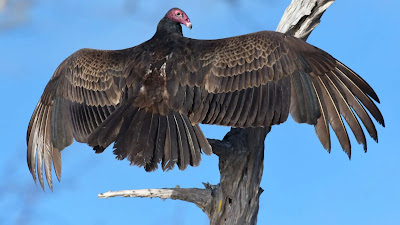“Behold the deer, the deadliest beast in North America.” Wha-a-a-a-t?!
Talk about “scare headlines”! But this one’s true, based on statistics
indicating that “deer are responsible for the deaths of about 440 of the
estimated 458 Americans killed in physical confrontations with wildlife in an
average year.”
That’s not deer-on-humans
confrontations, but “the unfortunate result of more than 2 million people a year
plowing into deer with their sedans and SUVs, usually on a two-lane road, often
at high speed.” That number, and others,
come from “Human-Wildlife Interactions,” as tabulated by
researchers.
The same report indicates that deer are
most dangerous in November because it’s both “rutting season” and the end of
daylight saving time; that West Virginia is most dangerous for deer-car
collisions; that deer are involved in at least 69% of animal related accident
claims; that November twilight time is the peak hour for deer-car crashes; that
dusk exceeds dawn for collision numbers because while commuters, like deer, are
also crepuscular, drivers are more likely to be out at dusk than at dawn.
In other news about deer, who comprise a huge wildlife population in the US and Canada, people have been shown to introduce coronavirus to white-tail deer, who then spread it to one another. It’s theorized that people feeding deer might be one way of passing on the virus, and deer encountering human trash or waste could be another.
Hunters might be in jeopardy because of their interactions with the animals. Wearing masks and washing hands thoroughly are recommended safety precautions.
How much a hazard covid-carrying deer
may be to humans hasn’t been determined, but the number of infected animals who
spread disease among themselves makes deer a kind of reservoir for different
covid strains. And at least in the long run, that’s not good.
Stop
bird strikes
I’ve heard it; have you? The “it” is the upsetting sound of a bird flying into a window. Worse is the sight of an injured or dead bird under the window. One way to try preventing that from happening is to put silhouette stickers that look like predator birds on windows birds might confuse with open space – near bird feeders, for instance.
Problem is, according to “solid” research, such stickers do no good if placed inside windows, instead of outside. It’s that simple. (I’ve made that mistake, and now know how I erred.) A related problem: finding such stickers to begin with. With the best intentions, I’ve applied them wrong after finding them by accident! https://tinyurl.com/3a4wc7dj
Turkey Vultures
by Maya C. Popa
Since the wind knocked down power lines
and lightning set a birch aflame
from within, three turkey vultures roost
along the topmost branches,
matted black feathers with small red heads,
unfortunate harbingers of death,
though really, almost comically alive—
hunched as though deciding
some minor point before slipping off
on the umbrellas of their wings to rid
the roads of evidence of violence not theirs.
#
Here are links to the ASPCA info sheets for dogs & cats https://tinyurl.com/35ene8kt and a link to the Fed’s suggestions: https://www.ready.gov/pets; and finally, advice of a trusted area veterinarian appears at the end of this blog post.
With all the verbiage here lately I've hoped to motivate all of us to assemble a disaster kit for our pet(s). By now, though, I’ve said and written enough on this subject, and it’s up to each of us to take that positive action. My suggestion: look at the two links above, then the vet’s advice below, all the time noting what you want to line up for your own own kit(s). Then get to it.
Let’s
do what our pets need us to do for them!
# # # # # # # # # # # # # # # # # # # # # # # # # # # # # # # # # # # # # #
|





No comments:
Post a Comment